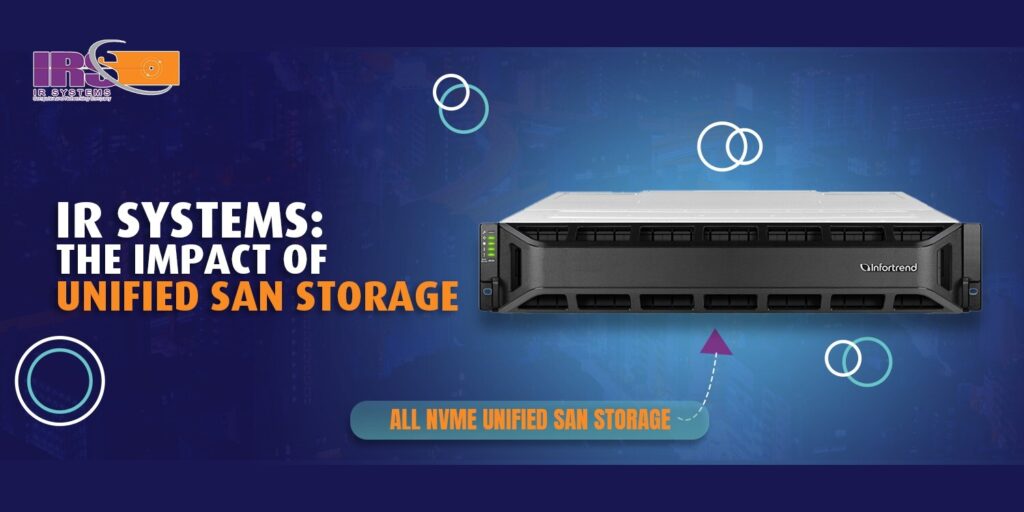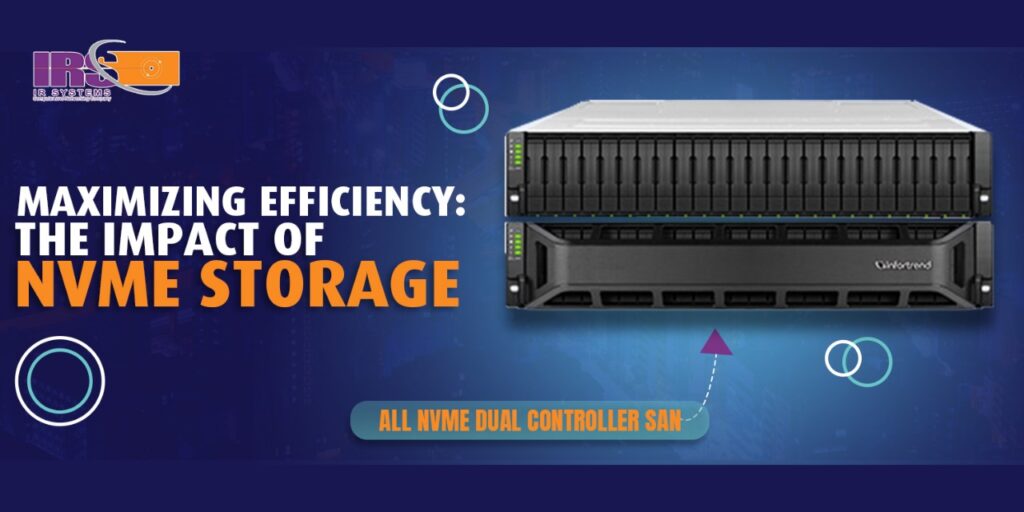The Evolution of IR Systems: Unlocking the Power of Flash Storage

In today’s digital age, the ability to swiftly access and retrieve vast amounts of information is paramount for businesses striving to stay ahead in a competitive landscape. Enter Information Retrieval (IR) systems, the backbone of modern data management and analysis. With advancements in technology, particularly in the realm of flash storage, we have undergone a remarkable transformation, revolutionizing the way organizations harness and leverage their data assets. Understanding Information Retrieval Systems At its core, an Information Retrieval (IR) system is designed to efficiently store, index, and retrieve information from vast repositories of data. From search engines indexing the World Wide Web to enterprise databases organizing corporate information, IR systems play a crucial role in facilitating access to relevant data in response to user queries. Components of an IR System: Indexing Mechanism: IR systems employ sophisticated indexing algorithms to organize data into searchable structures, enabling quick retrieval based on relevance. Query Processing: When a user submits a query, the IR system processes the request, matches it against the indexed data, and retrieves relevant results. Ranking Algorithms: To enhance search accuracy, IR systems utilize ranking algorithms that prioritize results based on factors such as relevance, popularity, and user preferences. User Interface: The user interface serves as the gateway for interacting with the IR system, providing intuitive search functionalities and displaying search results in a user-friendly format. The Emergence of Flash Storage Technology Traditionally, Information Retrieval systems relied on conventional storage mediums such as hard disk drives (HDDs) to store and retrieve data. However, the advent of this storage technology has introduced a paradigm shift, offering unparalleled speed, reliability, and scalability. Advantages of Flash Storage: High Performance: Flash storage boasts significantly faster read and write speeds compared to HDDs, resulting in quicker data retrieval and processing. Low Latency: With minimal access times and latency, storage accelerates response times, ensuring swift retrieval of information even during peak usage. Reliability: This storage is inherently resistant to mechanical failures, making it more reliable and durable than traditional HDDs, especially in high-demand environments. Scalability: Flash storage solutions can be easily scaled to accommodate growing data volumes, providing organizations with flexibility and agility in managing their data infrastructure. Transforming Information Retrieval with Flash Storage The integration of this storage technology into Information Retrieval systems has unleashed a new era of efficiency and performance. Organizations across various industries are experiencing the following transformative benefits: Enhanced Speed and Responsiveness: By leveraging the high-speed read and write capabilities of storage, IR systems can deliver near-instantaneous search results, empowering users to access information swiftly and seamlessly. Improved User Experience: The reduced latency and rapid data retrieval enabled by this storage translate into a smoother and more responsive user experience, driving user satisfaction and engagement. Increased Productivity: Faster data access and retrieval streamline workflows, enabling employees to accomplish tasks more efficiently and make informed decisions in real time. Looking Ahead: The Future of IR Systems As technology continues to evolve, the future of Information Retrieval systems holds immense promise. Emerging innovations such as solid-state drives (SSDs), non-volatile memory express (NVMe) storage, and machine learning algorithms are poised to further enhance the speed, intelligence, and scalability of IR systems, paving the way for unprecedented advancements in data management and analysis. Conclusion In the ever-expanding digital landscape, Information Retrieval systems serve as the backbone of data-driven decision-making and knowledge discovery. With the integration of this storage technology, IR systems have transcended previous limitations, unlocking new levels of speed, efficiency, and scalability. As organizations embrace the transformative power of flash storage IR system is best.
Revolutionizing IR Systems: The Impact of Unified SAN Storage

In the ever-evolving landscape of Information Retrieval (IR) systems, storage solutions play a crucial role in determining efficiency, scalability, and performance. Among the latest advancements, Unified Storage Area Network (SAN) solutions have emerged as a game-changer. Let’s explore how Unified SAN Storage is reshaping IR systems across various domains. Understanding Unified SAN Storage This Storage represents a convergence of storage technologies, combining block-level storage for high-performance applications with file-level storage for data sharing and management. This integrated approach offers a single, cohesive platform for storing and accessing diverse data types, streamlining management, and enhancing overall efficiency in IR systems. Enhancing Data Accessibility One of the primary advantages of Storage in IR systems is its ability to provide seamless access to data across heterogeneous environments. By consolidating storage resources into a unified pool, organizations can eliminate data silos and enable smoother data sharing and collaboration. Whether it’s structured data in databases or unstructured content in files, Storage ensures consistent accessibility, facilitating faster information retrieval and analysis. Improving Performance and Scalability Performance and scalability are paramount in IR systems, where rapid data retrieval and processing are essential. This Storage leverages advanced technologies such as flash storage and automated tiring to deliver high-performance, scalable storage solutions. This enables IR systems to handle growing data volumes and increasing user demands without compromising on speed or responsiveness. Streamlining Management and Administration Managing storage infrastructure can be complex, especially in large-scale IR systems with diverse storage requirements. Unified SAN Storage simplifies management by providing a single interface for configuring, provisioning, and monitoring storage resources. Centralized management capabilities enhance efficiency, reduce administrative overhead, and enable IT teams to allocate resources more effectively, ensuring optimal performance and resource utilization in IR systems. Ensuring Data Security and Compliance Data security and compliance are top priorities for organizations operating in sensitive industries or handling confidential information. This Storage offers robust data protection features such as encryption, access controls, and data integrity mechanisms, helping organizations meet regulatory requirements and safeguard sensitive data assets. By consolidating storage resources and implementing unified security policies, IR systems can mitigate risks and enhance data privacy and compliance. Unified SAN Storage represents a significant advancement in storage technology, offering a unified approach to storing and managing data in IR systems. By combining performance, scalability, and management simplicity, the Storage solutions empower organizations to unlock the full potential of their IR systems, enabling faster data retrieval, improved efficiency, and enhanced data security. As the demand for advanced information retrieval capabilities continues to grow, Unified SAN Storage will play an increasingly vital role in shaping the future of IR systems across industries.
Maximizing Efficiency: The Impact of NVMe Storage in IR Systems

In the dynamic world of Information Retrieval (IR) systems, speed and efficiency are paramount. With the advent of Non-Volatile Memory Express (NVMe) storage technology, IR systems are experiencing a significant transformation, unlocking unprecedented levels of performance and responsiveness. Let’s explore how this storage is revolutionizing IR systems across various domains. Accelerating Data Retrieval with NVMe Storage This storage, designed specifically for flash memory, offers remarkable advancements in data retrieval speed compared to traditional storage solutions. By leveraging the parallelism and low-latency communication of the PCIe interface, the storage significantly reduces data access times, enabling IR systems to retrieve information at blazing speeds. Whether it’s querying vast databases or searching through multimedia content, NVMe-equipped IR systems deliver unparalleled responsiveness, enhancing user experience and productivity. Optimizing Indexing Efficiency Indexing lies at the core of IR systems, facilitating efficient data retrieval based on user queries. The storage plays a pivotal role in optimizing indexing processes by providing rapid read and write capabilities. The high throughput and low latency of storage enable expedited indexing of new data and updates to existing indices, ensuring that IR systems can keep pace with evolving information landscapes. By streamlining indexing operations, this storage enhances the overall efficiency and agility of IR systems, empowering organizations to extract insights from vast datasets with minimal delay. Enabling Real-Time Analytics Real-time analytics have become indispensable for organizations seeking to derive actionable insights from streaming data sources. The storage empowers IR systems to perform real-time analytics with unparalleled speed and efficiency. By eliminating bottlenecks associated with traditional storage solutions, NVMe-equipped IR systems can process and analyze data streams in near real-time, enabling timely decision-making and proactive interventions. Whether it’s monitoring social media trends, analyzing sensor data, or detecting anomalies in financial transactions, this storage ensures that IR systems can deliver actionable insights with minimal latency. Enhancing Scalability and Flexibility Scalability is a key consideration for IR systems, particularly in environments where data volumes are subject to rapid growth and fluctuations. This storage offers superior scalability compared to traditional storage solutions, allowing IR systems to expand storage capacity seamlessly to accommodate evolving data requirements. The inherent parallelism and efficiency of NVMe storage enable organizations to scale their IR infrastructure without compromising performance or responsiveness. Additionally, the compact form factor of NVMe drives facilitates flexible deployment options, making them ideal for both on-premises and cloud-based IR systems. Improving Reliability and Durability Reliability is paramount in IR systems, where data integrity and availability are critical for business continuity. This storage boasts enhanced reliability and durability compared to traditional storage solutions, thanks to its solid-state design and advanced error correction mechanisms. By minimizing the risk of data loss and system downtime, this storage ensures that IR systems can operate reliably under demanding conditions, safeguarding valuable information assets and maintaining productivity. NVMe storage represents a paradigm shift in the realm of Information Retrieval systems, delivering unprecedented levels of speed, efficiency, and scalability. From accelerating data retrieval and optimizing indexing processes to enabling real-time analytics and enhancing system reliability, NVMe-equipped IR systems are poised to redefine the way organizations access, analyze, and leverage information. As the demand for faster, more responsive IR solutions continues to grow, NVMe storage will undoubtedly play a central role in driving innovation and unlocking new possibilities in information retrieval and analytics.
